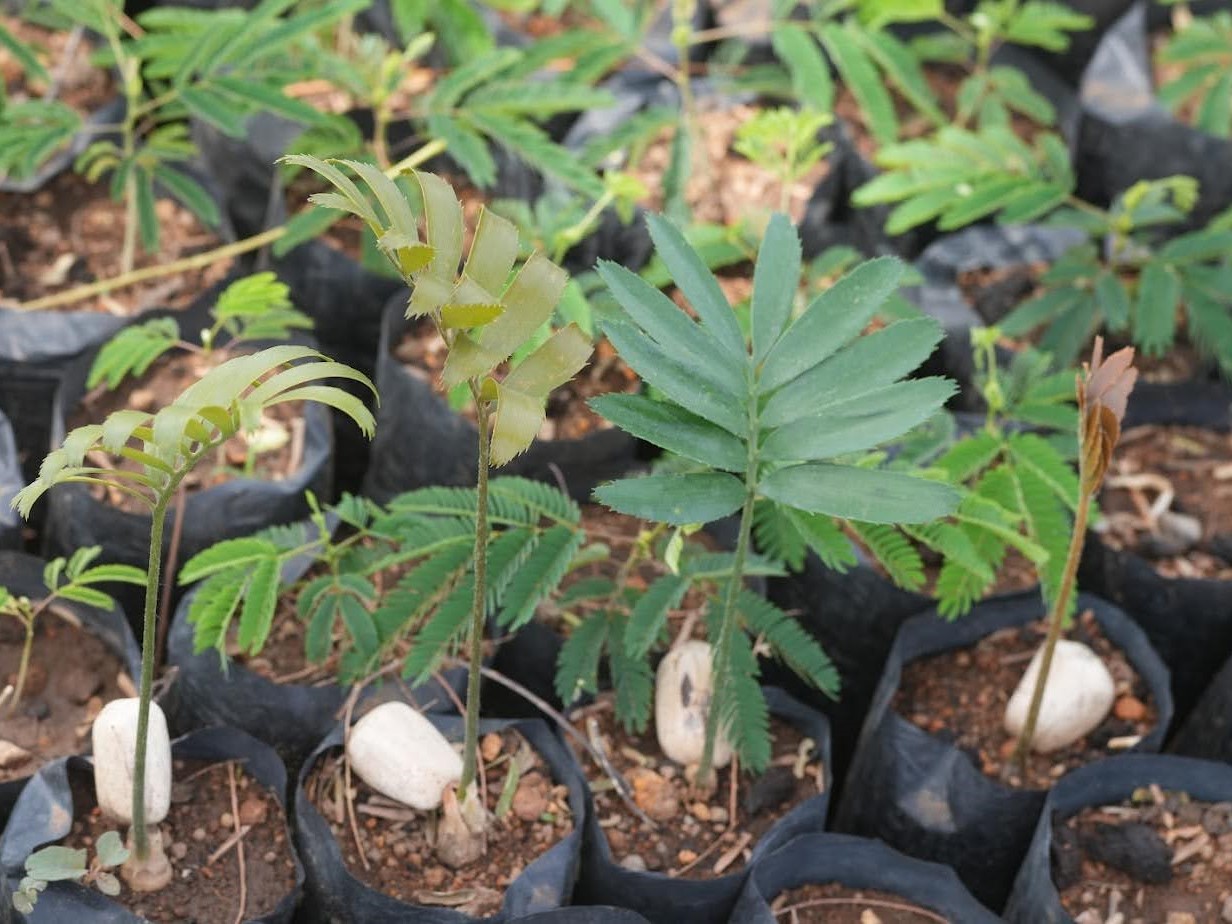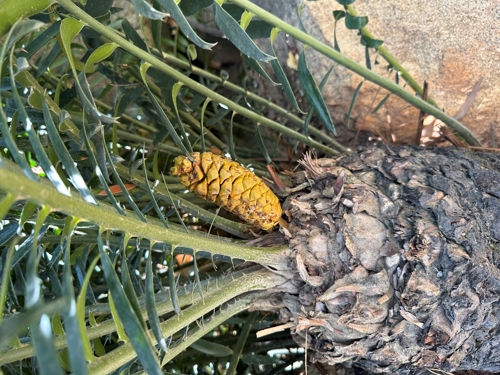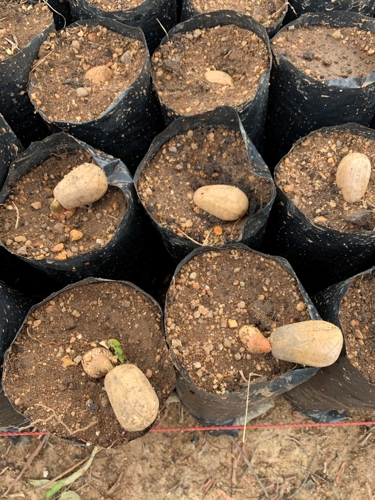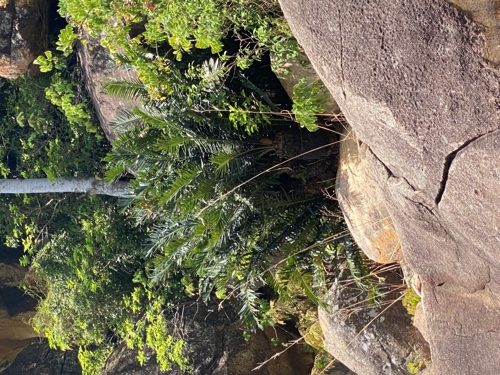Unveiling the conservation chronicle

Encephalartos nursery protection exsitu. Credit - Michel Puchercos.
Unveiling the conservation chronicle
In the heart of the Pankshin region of Nigeria, the Crescendo Africa project is being set up to develop the capability and capacity of local communities to protect the vulnerable species, Encephalartos barteri ssp allochrous (a central African cycad).
Empowering knowledge
The initial focus was on enhancing our understanding of the distribution of Encephalartos barteri ssp allochrous: its population status and threats. Through meticulous fieldwork, we now possess a detailed map of the species' presence, especially in the rocky hillsides around Pankshin. This knowledge sets the stage for targeted conservation efforts.
Critical to this success is the heightened awareness among local communities and stakeholders. Community leaders, authorities, and forestry staff are now well-versed in the importance of conserving Encephalartos barteri ssp allochrous, paving the way for sustained protection efforts. The engagement of local communities as field guides, ecological sampling trainees, and advocates for conservation strengthens the project's impact.

Field insights
This singular project, conducted at three sites—Kaldo peak, Wentul, and Ballang Kalep—dives into the ecological and biological nuances of Encephalartos barteri ssp allochrous. Recognising the global threat to cycads, including Encephalartos barteri ssp allochrous, the study employs precise sampling to assess population dynamics and threats.
Importantly, local communities are active participants in this conservation narrative. The project not only nurtures a relationship for ongoing monitoring but also empowers locals to protect their natural heritage actively.

Gilling Encephalartos seeds in nursery. Credit - F. de Lacoste.
Conservation futures
The project gathers data for immediate conservation actions while setting the stage for future endeavours. With a wealth of information on population dynamics and threats, the groundwork is laid for management plans that extend beyond the immediate scope.
Awareness creation, a pivotal aspect of the project, reaches communities and District Assemblies through workshops and educational materials. This ensures that the acquired knowledge transforms into tangible actions, creating a ripple effect for the protection of Encephalartos barteri ssp allochrous.

Protection Encephalartos in situ. Credit - S.de Lacoste.
Additionally, a complementary strategy for ex situ conservation seamlessly extends from this project. The establishment of community nurseries is a pivotal step in ensuring the long-term preservation of Encephalartos barteri ssp allochrous. These nurseries serve as secure breeding grounds and also actively involve community members in the process. By establishing locally managed nurseries, the community becomes directly invested in the growth and protection of young plants, strengthening the connection between residents and their natural heritage. This innovative approach broadens the scope of conservation beyond the confines of specific project sites, creating a robust network of community efforts that foster resilience and long-term prosperity for Encephalartos barteri ssp allochrous.

Protection Encephalartos in situ. Credit - S.de Lacoste.
In conclusion, the Darwin Initiative-funded project emerges as a beacon for Encephalartos barteri ssp allochrous conservation. From empowering local communities to unravelling the ecological intricacies, this initiative exemplifies the power of informed, community-driven conservation. Together, we’re scripting a narrative where Encephalartos barteri ssp allochrous not only survives, but flourishes.
Written by Solange de Lacoste. For more information on this Darwin Initiative Capability and Capacity project DARCC028, led by Crescendo Afforestation Foundation, please click here.

 Back
Back